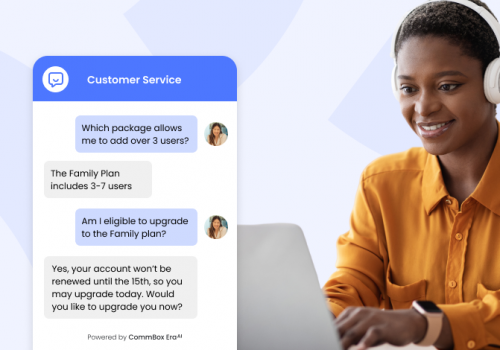Product Positioning Strategy. Is it time to start your product positioning strategy, but you don’t know where to start? Sometimes you just need to talk to the people on the frontline of your business to get things going. Today we’re going to be looking at 7 steps you need to focus on while designing your product positioning strategy and give you some helpful tips on how to engage your support team in the process.
What is Product Positioning?
Put simply, product positioning is the process of improving your marketing by identifying specific targets in the market and latching onto them. It’s essentially a form of marketing that presents the benefits of your product to a particular targeted group. It should come as no surprise that people like products for different reasons, it’s just the way we’re wired. Product positioning is about finding these preferences and framing the product as excellent at meeting these preferences.
For example, some products are popular with mothers. However, you can’t just start marketing to mothers without first understanding why they like the product. What is it they like? Is it because they perceive your product as more fun than your competitors? Or do they think it’s safer? Or is it because they can get it the next day? If you isolate the reasons, you can then use this information in your marketing material when advertising to that specific group.
You may have also heard of brand positioning. Brand positioning is similar to product positioning; only it’s much broader (it applies to your whole brand rather than just one product). With brand positioning, companies attempt to drill into why they are different from their competitors and use this information to attract new customers (or entice back previous customers). Brand positioning can be conveyed through a variety of methods like visual design, voice, communications, tone, and more.
For example, Tesla has positioned its brand as luxury electric vehicles for fun and tech-savvy people. They aren’t just looking to attract high-end customers, but also customers who like to have a bit of fun and not take things so seriously. That’s what makes Tesla different from other luxury brands like Jaguar. Tesla has quirky features like “ludicrous mode”, and they sent a car into orbit. Even if Jaguar started cornering the electric vehicles market tomorrow, it’s improbable they would try similar tactics to Tesla because their brand targets a different demographic.
The Ingredients Your Need for a Stellar Product Positioning Plan
Sometimes we want to dive headfirst into creating a plan, but it’s not always the best thing to do. First, you need to make sure you have the essential ingredients to make sure your plan will work. Here’s what they are.
Vision and Mission
Your mission or vision statement and your product positioning plan are tied closely together. If you don’t have a robust mission statement and an overall vision for your company, you can’t begin to position your product effectively.
Market Category
You have to have a firm understanding of your customer segments before you can start planning your strategy. Without customer segments, you won’t know who you’re marketing to or why.
Customer Pain Points
You need to understand the challenges your customers face when buying your products. If you have a weak understanding of your pain points, then you might entice new customers who become immediately frustrated by the buying process. These potential customers will then go elsewhere. This is especially important if you want to position your product as quick and convenient (for example, easy to use and you can get it delivered tomorrow). If you’re targeting people who put these values above everything else, then you’ll fall at the first hurdle when they realise buying your product is the opposite of quick and convenient.
Product Analysis
How is your product better than your competitor’s products? It’s paramount that you understand where your strengths and weaknesses lie in relation to your competitors. You will use this information in your marketing, and you’ll also need to have it on-hand when you get approached by potential customers. Knowing what your customers like about your product and where it fits into the market can also help you with your product pricing strategy.

7 Steps to Look at When Designing Your Product Positioning Strategy
1. Effectively Engaging Your Support Teams
Support teams come in many forms. You can have customer support, technical support, operations support, and more. The key thing they all have in common is that they support another function or entity. For example, the customer support team supports customers, while the technical support team might support employees, but they might also support customers with technical issues. No matter what the support team, staff in these teams have expert knowledge into the common problems in your business. They know what customers struggle with every day.
Engaging with your support teams gives you invaluable knowledge that can be difficult to get from other sources. Sure, you can ask customers for feedback or send out surveys; however, this can only tell you so much. The issue with surveys is that you only get responses from the type of person who is willing to take time out of their day to answer a survey. Mostly, these are people who feel strongly about your product (positively or negatively). This is especially true if the survey is long – the average moderately satisfied person doesn’t want to spend time doing surveys to help your business.
However, by talking to the support teams, you can get a snapshot of how your customers behave and feel as a whole. You might find that some problems are much more common than you previously thought. Or you might find that customers are using your product in a way you never anticipated. Put simply, once you know the scale and the scope of customer sentiment, you can begin to design an excellent strategy, and your support team is a crucial part of this.
Here are some tips on how to engage your support teams.
- Create an open communication environment – Your employees must feel comfortable communicating with people in different teams and of any rank. Exchanging ideas must be something you do all the time, not just when you want ideas for a new strategy. If you barely communicate with support teams, they won’t have confidence that you trust their voice when you ask for it.
- Ask for continuous feedback throughout the process – It’s a good idea to get some pointers from the support teams, but you have to take it a step further. When you start looking at how to implement their ideas, go back and ask for feedback on the solutions you’ve come up with.
- Keep them updated and reward them – When you implement their ideas, let them know and thank them for their contribution. When people see how their ideas have transformed the business, they become more engaged with future collaboration efforts.
2. Do Some Serious Market Research
Market research is the foundation of product positioning, so you can’t afford to cut corners in the area. The more information you have, the better. Talk to your customers to try and get some honest and thoughtful answers to several questions. These questions and their respective answers can help you understand where your strengths lie. Here are some examples of questions you can ask:
- What problems do we solve for you?
- What are your hobbies and interests?
- What is your age?
- What is your education level?
- What made you choose us over other businesses?
You can ask more questions, and we encourage you to, this is just a snapshot of what you can ask. The critical thing to note here is that you’re not just asking questions about how the customer uses your product or what problems it solves for them. You’re going beyond that and finding out who they are as a person.
3. Create Your Positioning Statement
A good product positioning statement should include a goal, a well-defined audience, your differentiators, and lastly, your product mission. Be concise and deliberate when creating your positioning statement. Every word should add to it and have a reason for being there (cut any filler out).
Below are some questions you can answer to help with your statement. To help you visualize it better, we’ve added some examples from a fictional photo-editing software company. This company doesn’t exist and is for educational purposes.
What is your company name? Photofluid
What does your product do? Allows budding photographers to edit photos from any device no matter how complex or straightforward the edit is.
What are your target demographics? Young freelancers and photography students.
What are your differentiators? Our UI is very clean and simple, which makes it easy to use on any device. We are cheaper than our competitors while still offering a full photo editing suite. Our tutorial and photography tips section helps budding photographers master the skills necessary to become a pro.
What proof do you have for targeting this group? Most of the people who use our software are between the ages of 18-25. Most have our app installed on more than one device.

4. Review and Revise
As we mentioned earlier, your product positioning statement must line up with your mission and vision statements. Make sure that you go through each of them and make sure nothing is inconsistent. It’s perfectly fine for one to capture something that the other doesn’t (the product positioning statement is more specific, after all). However, there should be no glaring inconsistencies. If you find inconsistencies, you might be tempted to change your product positioning strategy to match your mission statement, but this might not be the best way to approach the problem. Why not edit your mission statement? Maybe it’s time it was updated.
5. Conduct Competitor Research
Once you’ve done your market research, then it’s time to look more closely at your competitors. You might even find that you have competitors you didn’t even know you had. Try and determine where their strengths and weaknesses lie and how you can leverage your strengths against them.
6. What Makes You Unique?
This is all about finding your differentiators. Once you’ve identified your competitors, you should go through the list one by one and find some patterns. You can use online reviews as a source and look for keywords. What do your customers repeatedly say about your company? What do your competitor’s customers say about them? Do they have any weaknesses that are your strengths?
7. Does Your Product Positioning Statement Work?
Once you’ve created it, then it’s time to put it into practice and tailor your marketing strategy around this new target audience. However, you can’t stop there. You should approach your customers for feedback to see whether you are meeting the goals set out in your positioning statement. Do your customers in that targeted segment believe you’re solving their problems? Do they know about you at all? Do they think your product is for them? It would be best if you continually revised your product positioning statement overtime to get the best results.















